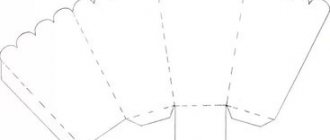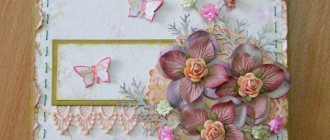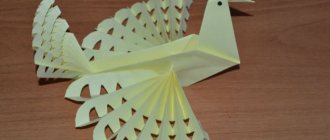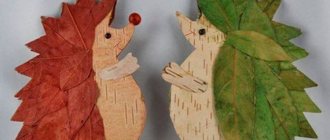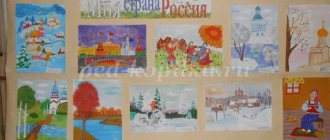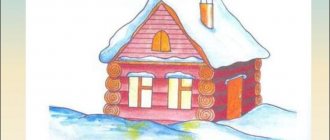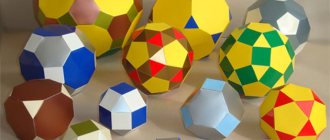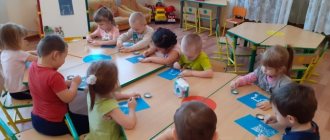Types of paper for creativity
Although many mothers are accustomed to buying packaging by eye, without paying attention to the type of paper.
In fact, this is the first thing to consider when purchasing. There are many types and here are the most common ones:
Regular
There are no identifying marks on the packaging of this paper.
It can be one-sided or two-sided.
The first one is suitable if you need to make an applique. Its reverse side is white, so it is not suitable for voluminous crafts. Double-sided can be used for any homemade products.
Please note that there are no specific classifications, so study the surface of the paper.
Bad paper is low-density, the painted surface shows through, and wrinkles easily.
It is very difficult to work with: the glue constantly gets wet, it is easy to tear and ruin. Good sheets are dense, have a smooth, bright surface, and tolerate glue well.
If you want your child to be happy, buy paper with a density of at least 60 g/m2.
Velvet paper
It has a characteristic “velvety” texture, very pleasant to the touch, slightly voluminous. For ordinary applications, such paper is rarely used - it is too expensive, but for postcards or kindergarten crafts it is well suited.
A good velvet sheet is evenly covered with flock, the surface is uniform and smooth. It should not break at the bend.
Holographic paper
Shiny paper that will decorate any craft well. One side of the sheet is covered with iridescent foil, which is tightly glued to the paper.
The holographic design shimmers in the light and often has an ornament. By the way, in addition to appliques, it is often used for costumes for the holidays.
Creped
Crepe paper has characteristic irregularities along its entire surface, which is why it resembles an elastic band.
It stretches well and is more suitable for voluminous crafts.
It is not suitable for appliqués and origami - crepe paper is intended for three-dimensional compositions.
By the way, it is sometimes sold under the name “corrugated”.
For origami
A special grade of paper with high density. It feels more like thin cardboard to the touch, but is easy to turn out and fold.
What distinguishes it from ordinary colored paper is:
- Saturated color. It's bright but not glossy. Almost always has a characteristic dullness and uniform color.
- Strength. Due to the increased density, colored origami paper does not rub on the folds and does not form an “accordion”. It is better suited for complex figures, since it does not deteriorate when turned out and folded repeatedly.
- Form. Almost always sold in a square format because most figures are assembled from this figure.
For quilling
Until recently, it was necessary to manually cut sheets into thin strips; now quilling paper is sold ready-made. Its qualities are similar to the previous one: durable and wear-resistant. When twisted, it does not lose its shape and sticks easily.
For scrapbooking
Special paper for crafts that has an original design or texture.
Designed for decorating notebooks, boxes, creating smashbooks.
For scrapbooking, there is also fluorescent paper that glows in the dark in different colors.
Paper techniques
If you set yourself the goal of listing all the options for techniques and remembering the name of crafts made from colored paper, the resulting list will consist of several items.
The most common include the following:
- applique,
- papier mache,
- decoupage,
- paper plastic,
- quilling,
- weaving,
- collage.
To get a complete picture of what kinds of paper crafts there are, each type of creativity is worth considering in more detail.
Which colored paper is best for crafts?
Based on the properties of craft paper, it becomes clear that a certain type is suitable for specific crafts.
Application
In the application it is important to observe several qualities:
- Brightness;
- Accents;
- Uniformity.
Good, thick colored paper is suitable for this case. It will not “ripple” when saturated with glue, nor will it change shape after drying.
You can also use velvet sheets. They're good for emphasis. If you use the appliqué style - decoupage, then you cannot do without velvet.
Polished paper, also known as coated paper, will help with bright compositions. Its glossy surface is much richer and more variegated than that of a regular one.
Papier mache
Traditionally, papier-mâché is made from newspaper, although very thin colored paper with double-sided printing is also suitable for these purposes. It is well saturated with paste and takes the required shape.
Quilling
It’s easier to buy a ready-made collection of quilling paper. They are sold in different sets, including for large paintings.
If you want to make a composition from certain colors, but there is no such set on sale, good double-sided colored paper, but not coated, will do.
Preferably with a high density so that the shape holds better.
Origami
It is better to buy special paper, but thick colored paper (uncoated only) will do. You can also use very thin cardboard.
Collection of paper and thread
Maria Alexandrova
Collection of paper and thread
The new school year has begun. And I wanted to change something in the group, add something new. I decided to redo the research corner. And the idea came to create a collection of paper and thread . For this you needed: different types of paper , glue, cardboard, a folder with clips and a little imagination.
the paper the same size and pasted it onto cardboard.
I typed the inscriptions on the computer, cut them out and pasted them under the paper .
Look what happened.
Everyone liked the collection This inspired me, and I decided to create a collection of threads .
I collected different threads that were on hand at home. Cut them to the same length.
I sewed it onto cardboard and wrote on it.
These collections help me a lot in my work. Children love to experiment. We learned the names of various papers , threads ; learned to compare them by properties.
Maybe someone will find my idea useful.
“Collection of plates” (continued) Hello, I am glad to welcome you to my page! Today I want to talk about my collection, which has been replenished with new plates. Summer. Didactic game “Collection of Patterns” Program content: 1. Show children a variety of patterns, color, and symbolic combinations. 2. Practice variable laying out. My collection of elephants is 10 years old, while walking around the store before the New Year, I saw small porcelain elephants in the window. I couldn’t resist and bought three figures at once. Collection of “Dinosaurs” In my group, I created a collection of dinosaurs. To do this, I made a model of the Mesozoic era and tried to convey the life of dinosaurs in this era. Collection of nature photographs. I have been interested in nature photography for several years now. I photograph our northern nature at different times of the year. I use my photographs in my work.
Types of colored cardboard for creativity
Beautiful crafts for elementary school or kindergarten can be made from cardboard. Unlike paper, it is always easy to use, and even kids have no problems with it.
Please note that cardboard can be coated or uncoated. The first one is more beautiful, but more expensive. It is rarely used in large compositions, especially in papermaking or modeling.
Ordinary
Plain colored cardboard, coated or uncoated. Often used in making cards and congratulations.
Corrugated
It has a characteristic “accordion” shape and pronounced volume. It is often used for framed pictures, which can be given as a gift or to decorate a child’s desk.
Velvet
Like paper, it has a pleasant velvety surface. Easy to cut and not soaked through with glue. Often used in appliques and when gluing boxes.
Foil
It has an unusual iridescent tone with thousands of inclusions. Used as decoration or accent.
Application
To compose the composition, use pieces of paper, fabric, and other available materials.
To create a work, you can use any type of colored paper for children's creativity. The use of this technique does not require special skill and allows you to:
- engage children in a useful activity that develops motor skills and creativity;
- create accessories and decorations for interior decoration from available materials.
When working with colored materials, any types of cardboard and creative paper, it is worth using PVA glue. It does not leave a yellow tint on finished products. Not stained with glue, they look attractive. A young child can cope with the task of creating an application.
Papier mache
Translated from French, the name of the technology means “chewed paper.”
To create three-dimensional figures and souvenirs using the indicated method, it is more practical to use torn or newsprint paper, which is perfectly impregnated with paste. Layouts and figures can be made from blanks, wire frames and original products.
Collage
A fun version of paper crafts.
It involves gluing various colored leaves onto the surface. Moreover, they can be different in texture. Plain, laminated, velvety and other types of paper are suitable for creating works. Considering the properties of cardboard for children, its use, as well as other materials of different densities, is allowed. Technologies for creating collages vary. In the standard version, torn pieces of the required size and shape are glued on. When it comes to creating geometric work, in order to ensure the accuracy of the lines, the figures are cut out with scissors.
Weaving
When creating a craft using this technology, you can safely use any type of paper for creativity.
Original patterns are obtained by interlacing individual strips of paper. Crafts made from sheets of contrasting colors look impressive. The checkerboard weave method is easy to understand. To make the process of creating crafts as convenient as possible, the ends of the paper strips are attached with tape to the cardboard base.
